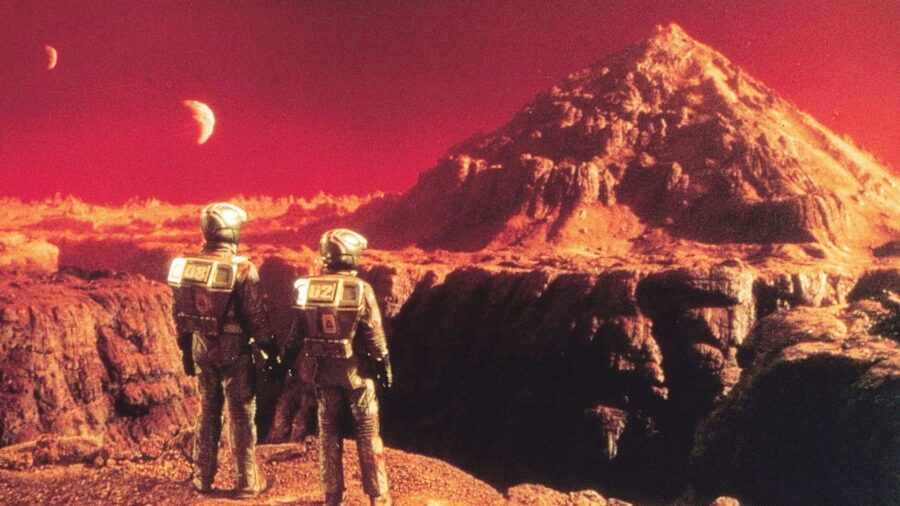Oxygen On Mars Possible With New Bacteria?

Normally, if someone told us a wild theory about creating oxygen on Mars, we’d just assume they stayed up too late watching Total Recall. However, science fiction came a bit closer to being science fact thanks to a recent scientific development to generate oxygen using special bacteria. As Science Alert reports, this bacteria can “feed on sunlight, slurp up carbon dioxide, and emit oxygen” and could eventually “be incorporated into paint that supplements the air in a habitat on Mars.”
Scientists have figured out a way to incorporate a bacteria into paint that be used to create oxygen on Mars.
As you might expect, this futuristic bacteria has a complex name: Chroococcidiopsis cubana. The bacteria itself is perfectly natural, but scientists have now developed an innovation that may take this bacteria to the stars.
Thanks to the ability to “biocoat” (think of biocoating as covering something with a kind of living paint) various surfaces with this bacteria, we may be one step closer to making oxygen on Mars a surprisingly practical reality.
Before anyone had the idea to take this bacteria to space, scientists began to consider the kinds of positive impact that the bacteria could have right here on Earth. On the most basic level, this bacteria works a bit like trees in that it takes in carbon dioxide to create the organic compounds it needs and releases oxygen in the process.
That means the bacteria will probably help absorb our abundance of Earthly carbon dioxide before it leaves orbit, but scientists are excited about the bacteria’s ability to create oxygen on Mars because it is already so suited for life on the red planet.

For example, this bacteria can thrive in desert areas, and that’s the kind of terrain the bacteria would have to contend with on Mars. Additionally, the bacteria can easily survive without sunlight: in the past, it has been found in the deepest places of our planet, including “ultra-deep caves, and in Earth’s lower crust beneath the ocean floor.”
That means it could similarly thrive while creating oxygen on Mars, though Surrey University’s microbiologist Simone Krings and her team have had to put in quite a bit of work to make that a possibility.
To transform this bacteria into a biocoating that can adhere to various surfaces, the team had to find the right balance between two extremes. That’s because “the biocoating matrix needs to be porous, to allow for hydration and cell transport, but mechanically robust, and hard.”
Before anyone had the idea to take this bacteria to space, scientists began to consider the kinds of positive impact that the bacteria could have right here on Earth.
Fortunately, Kring perfected a “method of mixing latex with nanoclay particles that achieved these properties,” and she verified that the paint was able to produce oxygen consistently for 30 days, bringing the innovation one step closer to creating oxygen on Mars for future colonists.
Now that the proverbial smoke has cleared, the team has named their innovation “Green Living Paint.” While they acknowledge the paint isn’t enough to make Mars breathable (you may still need Arnold Schwarzenegger’s help with that), this latest innovation is taking one giant leap for bacteria kind when it comes to reducing the oxygen needed to visit and colonize Mars. If this technology is perfected, Total Recall’s ironic command to “get your ass to Mars” may become a real marketing line used to lure future aspiring colonists.












